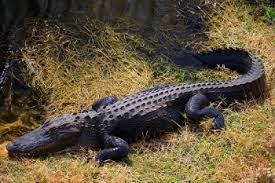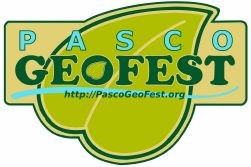PGF Leaf #1 - American alligator Traditional Geocache
PGF Leaf #1 - American alligator
-
Difficulty:
-

-
Terrain:
-

Size:  (regular)
(regular)
Related Web Page
Please note Use of geocaching.com services is subject to the terms and conditions
in our disclaimer.
Each of the geocaches in the PGF Leaf series will highlight an animal that can be found in the Starkey Wilderness Preserve. While searching for the PGF Leaf caches, and while hiking in any wilderness area, please remember ... this is the animal's home - you are merely a guest. Be respectful of natural communities, and leave nothing behind but footprints.
Cachers are invited to upload pictures they take of each animal subject - as long as the picture was actually taken within the boundaries of the Starkey Wilderness Park.

American alligator
The first animal featured in the PGF Leaf Project is the American alligator. It's listed first because we're listing animals in alphabetical order - but the alligator is also at the top of the food chain, in Starkey Park and anywhere else it roams. You won't see that many gators in Starkey park (not like along the Hillsborough River basin) - but they are here.
Alligators live in fresh water wetlands, especially along rivers where water is present the entire year. They are typically not aggressive and will flee from human activity, although larger adults may stand their ground when approached (never a good idea). Adult males grow up to 11 to 15 feet in length and can weigh up to 900 pounds. Females are smaller.
Alligators are carnivorous predators that feed mostly on fish and other aquatic prey in the water or along the banks. Egrets, heron, and other water fowl are also taken from time to time. On occasion, but rarely, an alligator may catch and eat deer or feral pigs. You should always use caution when walking along the river bank or wading across streams.
Normally, alligators remain almost fully submerged with only their eyes and a portion of their back visible above the water. But, being cold-blooded creatures, they often can be seen sunning themselves along the bank when the water is cool.
Alligators reproduce by laying eggs, 20 to 50 at a time, which the female places in a nest prepared from leaves, sticks or mud. She stays near the nest during the 65 day incubation period. And after hatching, she carries the hatchlings to water in her mouth. Once released, the baby alligators are protected by their mother until they are able to fend for themselves.
Alligators were hunted extensively in past years for their hide (used to make shoes and women's purses) and for their meat. They were placed on the endangered species list in 1967. The recovery of the American alligator in recent years is one of the success stories of the Endangered Species Act of 1973, and they were removed from the list in 1987. Hunting and trapping of alligators is, however, still tightly controlled.

This cache was placed by a member of the PGF Leaf team and is maintained by the WestPascoEventTeam
The PGF Leaf Project is a geocaching series placed with the cooperation and permission of Pasco County Parks & Recreation Department, Pasco Department of Tourism, and the Southwest Florida Water Management District.
Additional Hints
(No hints available.)